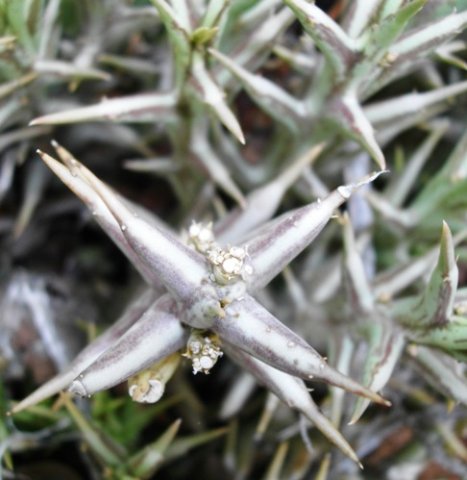Orbea lutea subsp. lutea

Author: Ivan Lätti
Photographer: Ivan Lätti
Orbea lutea subsp. lutea, in Afrikaans commonly the geelaasblom and scientifically at some stages Caralluma lutea var. lateritia and C. vansonii respectively, is a low-growing stem succulent that clumps and reaches heights around 10 cm. Where the branching stems spread horizontally on the ground they root, forming expanding mats.
Plant name changes reflect continual botanical classification system improvement achieved by knowledge growth. Incremental improvement of the internal consistency in the scientific nomenclature promises to remain a task without end. No perfect final classification is possible, for nature continues to evolve as a living entity. And people never know everything, at least not after adolescence. Science, the interpreter of nature, follows. The layman can learn, like the scientist, everyone choosing what to learn. Dedication overcomes exasperation over all the name changes, accepts the challenge and, when fully socialised, proudly notes the progress.
The short stems have vertical arrays of protuberances, tubercles or teeth that are sometimes as laterally flattened as these seen from above. There are signs that flowers had been present on these stem tips, already gone by January, fruits and all. That is somewhat unexpected as inflorescences usually emerge from lower stem parts. Flowering happens in summer and early autumn.
The subspecies distribution is widespread while northeast in South Africa, in all provinces apart from the Western Cape and the Eastern Cape, and only in less than the eastern half of the Northern Cape. It also grows in some other countries of southern Africa. This may be the most wide-ranging member of its genus.
The habitat is diverse, semi-arid scrub or grassy places, often thriving in the protective cover and shade of taller plants. The habitat population is deemed of least concern early in the twenty first century.
O. carnosa is a similar plant, its stem tubercles shaped differently. O. elegans also has this flat shape of the teeth, although there is less purple on the stems of that species that is only known in the Blouberg area of Limpopo. This photo was taken in the central part of the Kruger National Park, well within the range of O. lutea (Smith, et al, 2017; Letty, 1962; White and Sloane, 1937; iNaturalist; www.plantzafrica.com; http://redlist.sanbi.org).

